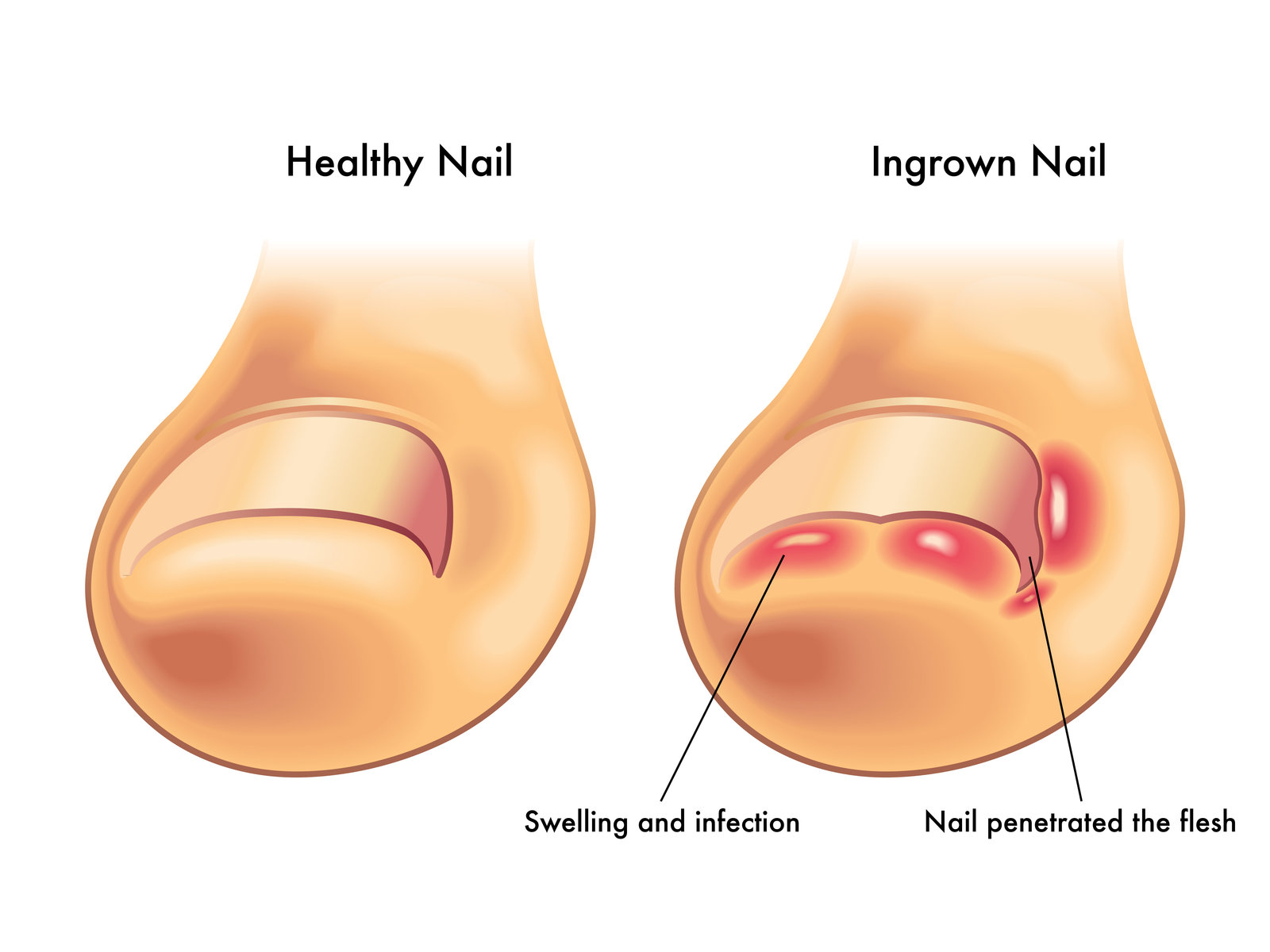Ingrown Toenail Treatment at Austin Foot & Ankle Center
Ingrown toenails, while common, can transform from a minor annoyance into a significant source of pain and infection if not addressed promptly. At Austin Foot & Ankle Center, we specialize in the treatment of ingrown toenails, offering a range of solutions tailored to each patient’s needs.

Understanding Ingrown Toenails
An ingrown toenail occurs when the edge of a toenail grows into the surrounding skin, leading to inflammation, pain, and potentially infection. This condition, often affecting the big toe, can be triggered by several factors including:
- Improper Nail Trimming: Cutting nails too short or not straight across encourages the nail to grow into the skin.
- Tight Footwear: Shoes that crowd the toes can push the nail into the surrounding tissue.
- Injury: Trauma to the toe can alter nail growth patterns, leading to ingrown toenails.
- Foot Structure: Individuals with curved or thick nails are more susceptible to developing ingrown toenails.
Symptoms to Watch For
Early recognition of ingrown toenail symptoms can lead to more straightforward and less invasive treatments. Common symptoms include:
- Pain and Tenderness along the edge of the toenail.
- Redness and Swelling around the nail.
- Infection signs, such as pus or drainage, are accompanied by increased pain.
Expert Diagnosis and Treatment
At Austin Foot & Ankle Center, our foot and ankle surgeons provide thorough assessments to diagnose ingrown toenails, determining the most effective treatment path. Whether your condition is uncomplicated or you’re experiencing severe pain and infection, our team is equipped to offer the care you need.
Treatment Options
At Austin Foot & Ankle Center, we understand the discomfort and potential complications associated with ingrown toenails. Our comprehensive approach to treatment not only addresses the immediate pain and infection but also aims to prevent recurrence. Here’s a detailed look at the treatment options we provide, tailored to the severity and specific needs of each patient:
Conservative Treatments
- Proper Nail Care: Education on correct nail trimming techniques is crucial. Nails should be cut straight across, not too short, and corners should not be rounded off to prevent the nail from growing into the surrounding skin.
- Soaking: Regularly soaking the affected foot in warm, soapy water can reduce swelling and ease discomfort. This can be done several times a day, especially after wearing shoes.
- Appropriate Footwear: Switching to shoes with a wider toe box can relieve pressure on the ingrown toenail and provide comfort during the healing process.
- Antibiotics: If there is an infection, oral or topical antibiotics may be prescribed to clear the infection and reduce inflammation.
Advanced Treatments
For cases where conservative methods are insufficient, or the ingrown toenail recurs frequently, more advanced treatments may be recommended:
- Partial Nail Avulsion: This minor surgical procedure involves the removal of the ingrown portion of the nail under local anesthesia. It provides immediate relief from pain and allows the toe to heal properly.
- Total Nail Avulsion: In severe cases, or when ingrown toenails are recurrent, removing the entire toenail might be necessary. This option is considered when other treatments have failed to provide relief or prevent recurrence.
- Matrixectomy: This procedure targets the nail matrix (the nail’s growth center) to prevent the regrowth of the problematic section of the nail. It can be performed chemically, surgically, or with laser therapy, depending on the patient’s specific situation and the surgeon’s recommendation.
- Laser Therapy: Utilizing advanced laser technology, this treatment option can effectively remove the ingrown portion of the nail and treat any associated infection. Laser therapy is known for its precision, reduced recovery time, and minimal discomfort.
MLS Laser Therapy
At Austin Foot & Ankle Center, we also offer Multi-Wave Locked System (MLS) Laser Therapy as a cutting-edge option for pain management and to accelerate healing. This FDA-approved treatment is especially beneficial for reducing inflammation and enhancing tissue repair without the need for invasive procedures.
For patients with diabetes or circulatory issues, seeking professional care for an ingrown toenail is crucial to prevent complications.
Preventative Strategies
Preventing ingrown toenails involves proper nail care, choosing appropriate footwear, and recognizing the early signs of trouble. Regular trimming and filing of your nails can help control their growth and prevent them from growing into the skin.
Schedule Your Consultation Today
Don’t let ingrown toenails disrupt your life. Contact Austin Foot & Ankle Center to schedule your appointment and explore your treatment options. Our team is committed to providing personalized, effective care to get you back on your feet, pain-free. Whether you’re dealing with your first ingrown toenail or seeking solutions for recurrent issues, we’re here to help.

